Note on road safety sent to Louth County Council
19th January 2023
Dear ----------,
I write concerning danger on the stretch of the Ardee Road before the side entrance to Dundalk Grammar School, where I teach. In 2018 and 2019 the issue was raised within the school and brought to the individual attention of all town councillors, without resulting changes. It was raised again last autumn, with the hope that a fresh perspective might pay off.
At Junior Cycle, the concept of Wellbeing is being encouraged in all subjects. From 1st to 3rd Year, I’ve been presenting the situation on the Ardee Road in Civic, Social and Political Education as a way to study how we behave in public spaces.
Since Covid began, people tend to be more aware of their behaviour among others, the root of limiting spread of sickness lying in empathy. You don’t want to possibly cause me to become ill, and likewise I should take care not to chance visiting sickness on you. There are measures we take to, if not prevent, at least reduce the likelihood of each other suffering, and passing on
sickness to others again. We do this because we care about fellow humans.
On the Ardee Road, it’s typical to see cars parked on the left after the traffic lights on a hundred-yard stretch before the side entrance to the school. On the other side of the road, often motorists park half on the pavement. There are two unbroken white lines running along the centre of this stretch.
On the right hand side, as you leave Dundalk, people in wheelchairs, pushing prams or with reduced sight have to deal with the cars taking up part of the pavement. Drivers entering Dundalk have
to move towards the centre of the road, because of these cars taking up space on the road.
On the left-hand side, the cars parked entirely on the road cause motorists to move so far to the centre they cross the unbroken white lines. This results in

motorists having to take stock of who’s coming and slow accordingly, perhaps giving way, on a main road where the motorist may have relaxed into the expectation that they can drive steadily while picking up speed.
What significantly worsens the situation, is the school entrance for cars. There’s a dedicated pedestrian gate with a barrier in front, close to the traffic lights but further up a gated entrance for cars is also used by students. Some stand by the wall, awaiting collection by car on the Ardee Road itself; some cross the road to the Iarnrod Eireann sliproad for collection there. Motorists enter and leave through these gates
throughout the day. The concern is that when leaving, their visibility is markedly limited by cars parked on the road. This is shown in the above photo, taken from the perspective of a driver coming out of the school gates. If turning left, motorist can creep along the pavement before deciding it’s probably safe to move into the road. If turning right, they can find themselves looking at cars blocking their line of sight, with the result that an approaching car becomes visible only when near the entrance. That means slow, cautious nudging out onto the road, as befits a situation with limited visibility, which can leave the approaching driver
being surprised by the emerging car, and hopefully braking in time. The emerging driver could instead decide to enter the road rapidly, and get it over with. Doing so can be affected by both an approaching car and one parked half on the facing pavement. It causes jerky movements in an area where drivers should be measured, for fear of a child caught unaware, or even looking at their phone while crossing the road. Alongside the humdrum parking of cars opposite the unbroken white lines, is the motorist who ignores the double yellow ones.
On wet afternoons, parents collecting children may justify to themselves parking,
or pulling in here, yet given the reduced effectiveness of brakes in those conditions, these are the days when motorists should particularly not park here. It may not be only parents who park here – it’s a short walk into town or to the train station. Accordingly, these drivers

need to develop awareness of the risks caused, as opposed to focusing solely on parents of schoolchildren or employees of the school.
12-18 yr olds vary in their behaviour. It’s fair to say they include some who from tiredness, giddiness or carelessness don’t always look after themselves when crossing roads while carrying bags. In an area where children are found in number, we particularly have to drive carefully.
This stretch of the Ardee Road has the ingredients for a collision between cars, and perhaps also pedestrians, possibly children. Because the likelihood is that
much higher because of the school entrance, there’s a need to manage the area differently. Areas worth considering include an awareness campaign; signage on walls; road markings and fines.
Taking classes outside to view the road as a road safety peril has already started. Parents parking here may have never driven out of the school gates and thus can’t relate to the difficulty in doing so, and resulting danger. A child letting a parent know may be the most effective measure. The same car has been left parked daily just at the edge of the double yellow lines this
past week, the owner perhaps not realising that their parking opposite the unbroken white lines is also against the rules of the road. A word with that driver might change their habit. I’ve spoken to drivers when seated in their parked cars; it hasn’t always worked, but when it has, the change may be long-term and deeper than one resulting from fear of a fine.
Other initiatives from within the school could include a whole-school assembly where photos illustrating the danger resulting from parking here are shown and explained, in the hope that students will pass this on to their parents, and apply this perspective when driving in later life. Also,
for those cycling or simply walking, this pausing to size up a familiar stretch may sharpen their outlook elsewhere.
Parents/guardians can be emailed by the school, with the above photos and explanation.
For a fortnight, employees in a position to be do so could by a rota stand on the Ardee Road from 3.30-4.15 and engage with parents, or any other drivers parked there, giving them an explanatory handout. The hope is that a pleasant conversation will have lasting effect.
Involving classes as a CSPE project –studying how civic change comes about
and how to engage with public bodies and a range of others loose groupings of people - has also already started. This email is part of that.
Art classes might be involved in designing posters for a campaign and permanently posted signs.
Aside from the issue at hand, it’s a useful case study in not putting our convenience first, assessing the prominence given to cars, and instead looking at behaviour in social spaces as coming with responsibilities. That hopefully will have a knock-on effect on their developing empathy in their lives ahead.
The rules of the road are specific on not parking opposite unbroken white lines. A sign stating this might catch the eye of motorists parked here.
Returning to a parking fine notice on the windscreen would also play a part. Is it correct to say that the wardens’ beat doesn’t include this stretch? If so, can this be changed? While empathy is the cornerstone of this effort to make the road safer, blunt fines may reach motorists who don’t respond to reflective appeals.
The double yellow lines around the entrance confuse the matter, because this may be leading drivers to think as a consequence that it’s therefore legal to park opposite the unbroken white lines; why else would there be a change in the markings, they may think. Also, there’s no KEEP
CLEAR SCHOOL marking on the ground
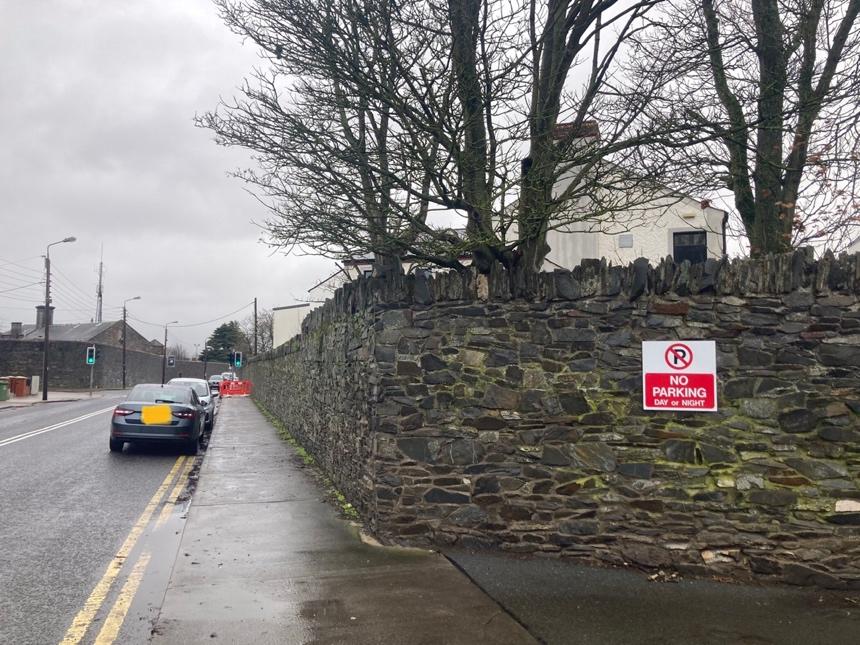
in front of the gates, which might have more effect than yellow lines.
The school might reconsider the wording of the existing signs either side of these gates, in that while clear – NO PARKING – this isn’t having as great an impact as ones would which explain why parking in this
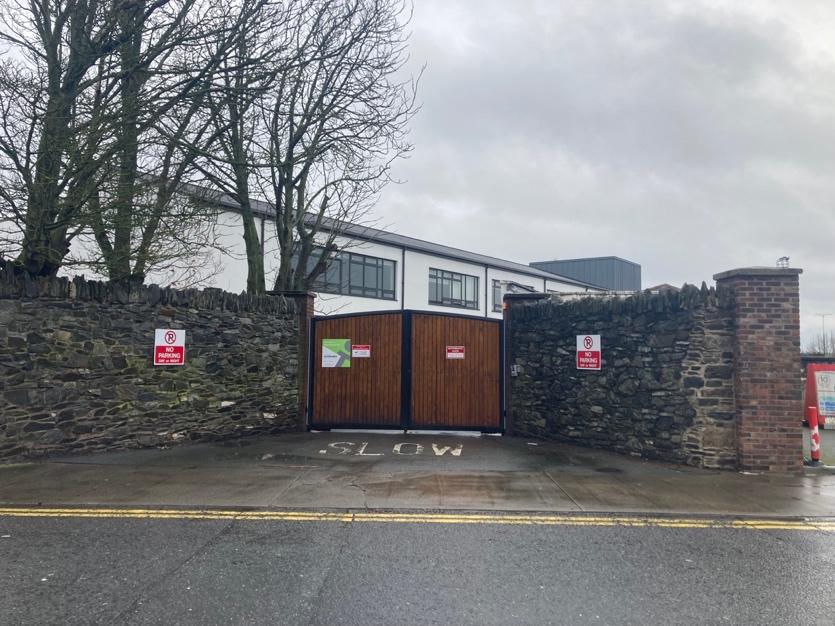
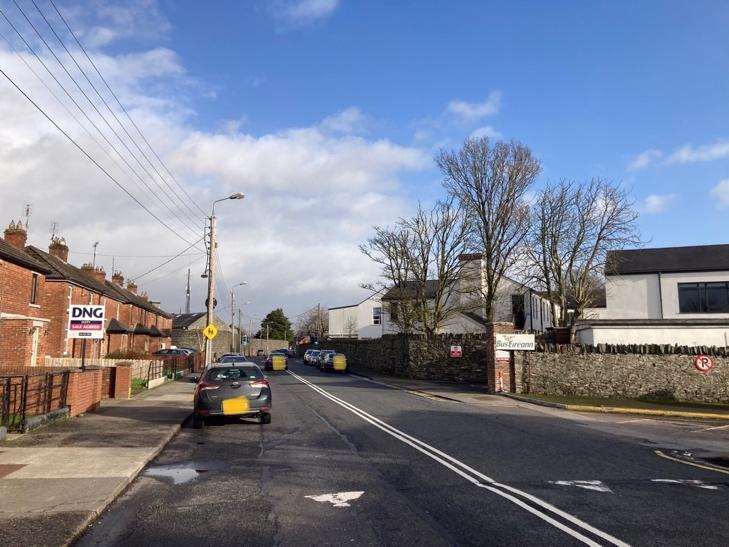
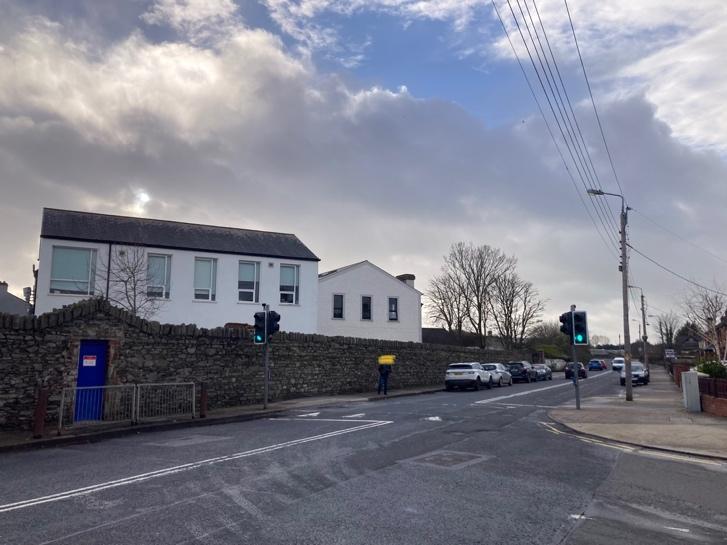
area doesn’t solely restrict access, it may also cause an accident.
Drivers leaving Dundalk, low down in their cars, see no signs along this stretch alerting them to children attending a school or an entrance/exit ahead. Drivers entering Dundalk see one aging sign level with the entrance, when we’d hope they begin to slow earlier, perhaps nudged by a sign on the bridge alongside the one for buses?
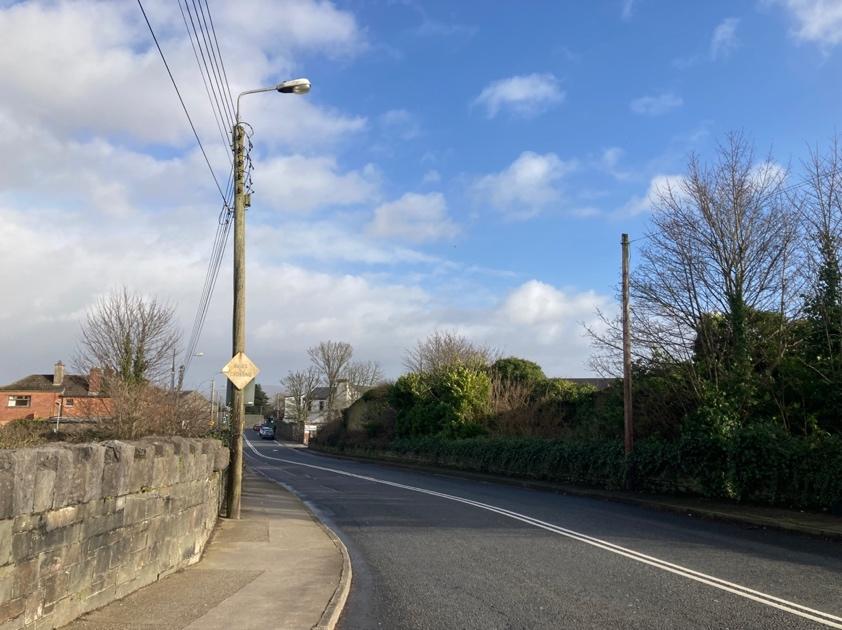
There’s no sense of entering an area where children have a presence; there are no bright colours or murals of the sort that let you know instinctively and nudge you to be careful.
This example from Dublin is encouraging.
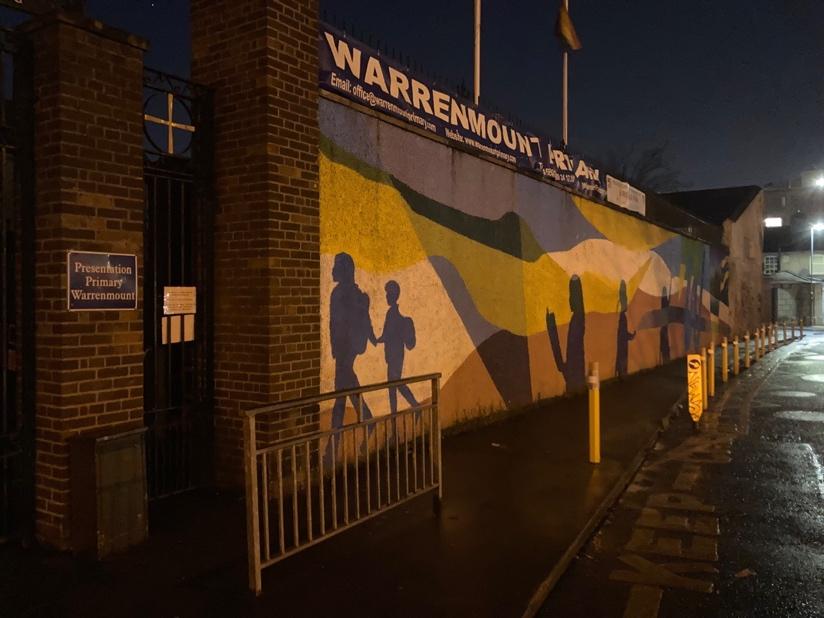
If our students brought their sensibility to such designs, by what process would they and the school engage with the council to see such designs and signs posted?
In conclusion, one way of looking at this, and it’s one often voiced, is that it’ll take a road accident here before the stretch is made safer. That outlook doesn’t take on board the lasting impact of an injury, let alone a death. It’s a smaller matter, but as well as any pedestrians hurt, the drivers would also be affected psychologically. Sadly, there would probably be a search to place blame on an individual’s decision, as opposed to focusing on the structure which prompted them to make a mistake.
In Peter Jukes’s Show me the Bodies, on the Grenfell Tower fire, he explains how the title came from a remark made prior to the deaths by a council official who thought the decrease in fires meant there was less need to address concerns raised. It was true that smoke alarms, fewer open fireplaces and less cooking with pans had reduced fires in flats but that was separate to the dangers allowed by not setting standards and enforcing building regulations. The same logic applies on the Ardee Road. Drivers and pedestrians may appear be coping, but shouldn’t have to be lucky every day.
Improving the safety of this stretch will lessen the chances of injury, plus convert this into a teachable moment.
It’d be great for students to receive some guidance on how to make progress here.
For sure this situation can’t be unique and there are aspects which haven’t occurred to us in the class discussions on which this note is based. If it were possible for you to meet a group of students, better again.
Best wishes,
Francis Foyle f.foyle92@dgs.ie